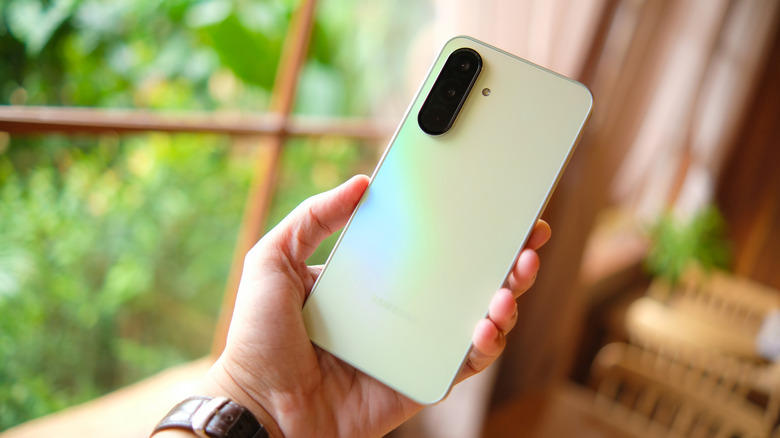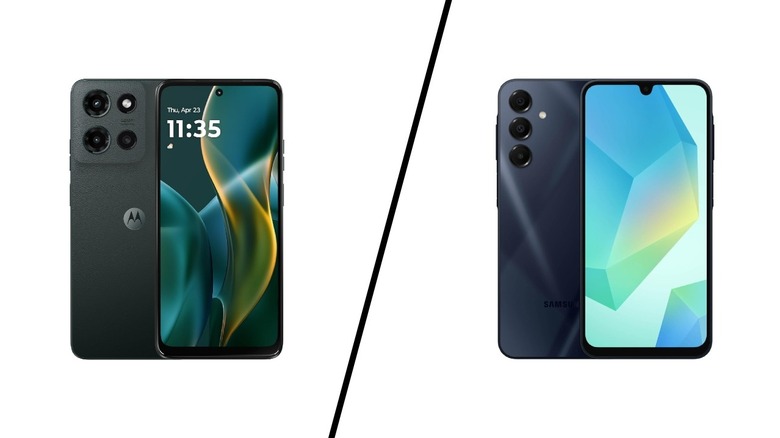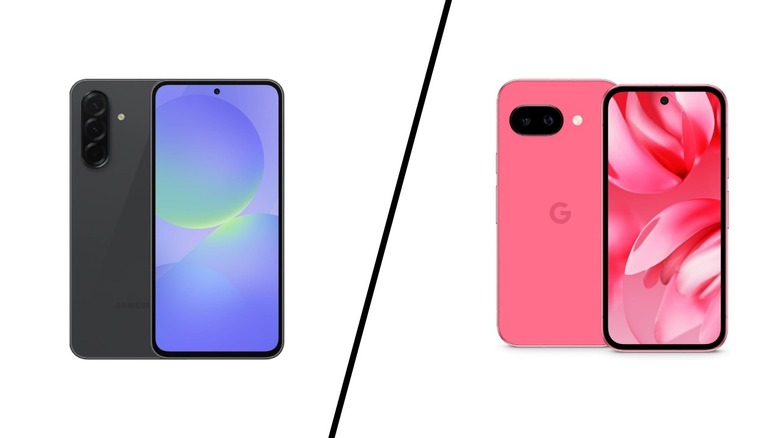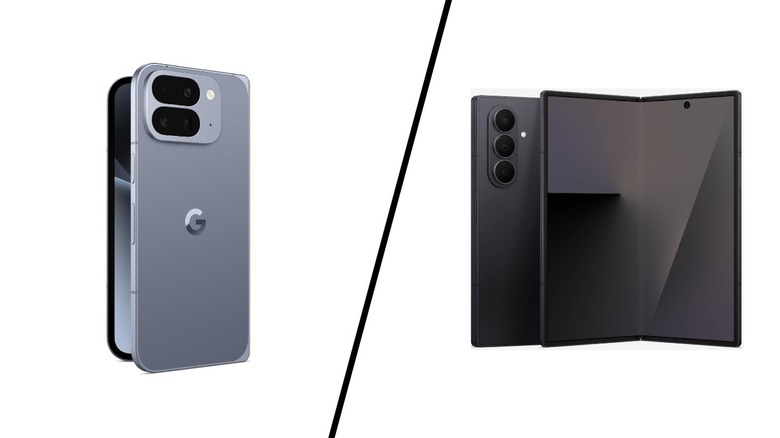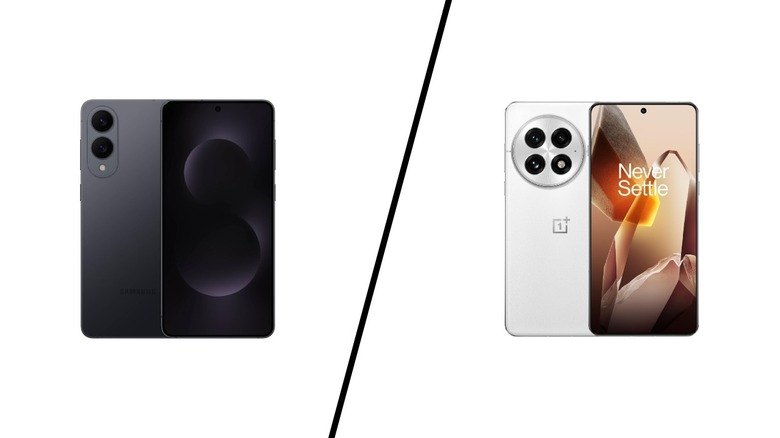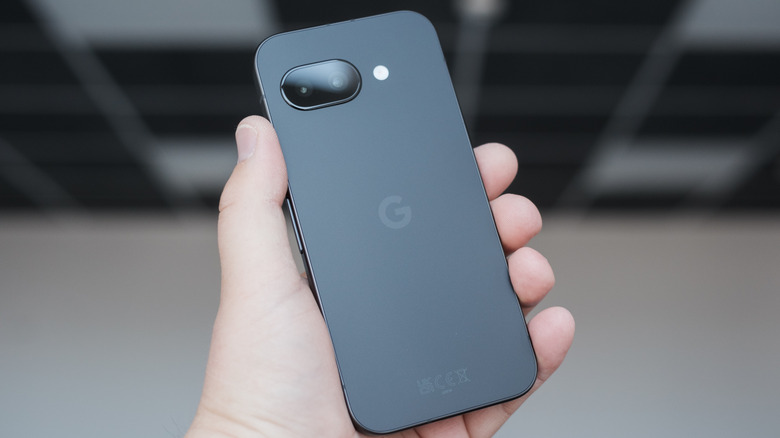5 Android Phones To Avoid In 2025 (And What To Buy Instead)
We may receive a commission on purchases made from links.
Unlike Apple — which only launches a few phones every year — most Android OEMs launch several models of their smartphones, aimed at various types of consumers. There are budget phones for price-conscious buyers, mid-range devices for those who seek the best value, and flagships that cater to consumers who want the absolute best cameras, performance, and other features. With several brands launching multiple phones in each category, it gets difficult for the average consumer to decide which phone they should buy. To add to the dilemma, brands heavily market certain new features on their devices that often end up being gimmicks. Since we don't want you to fall prey to brand marketing hype, we decided to put together a list of Android smartphones to avoid buying in 2025.
These are smartphones that are either not worth recommending at their price points or fall short of offerings from competing brands. While the phones may not be bad per se when viewed in isolation, they may be lacking in certain areas when compared to other smartphones in the segment. Having used tons of phones in 2025, we at SlashGear have a fair idea of which smartphones live up to the hype and provide excellent value, and which ones end up being rather disappointing, with no real upgrades compared to the previous year's version.
Moto G 2025
When it comes to the budget segment, Motorola's devices are generally regarded as some of the best cheap android phones one can buy. They offer good specifications for the price, with some models even having additional features like a stylus. While the Moto G 2025 also belongs to that category, it fails to impress when pitted against the Samsung Galaxy A16 5G. The biggest difference between the two smartphones that made us lean towards the Samsung is long-term software support. The Galaxy A16 promises six years of software updates as opposed to just two on the Motorola, which means you can use the smartphone for a longer duration. Apart from that, the Samsung phone also has a superior display in the form of a 6.7-inch OLED panel.
While the Moto G 2025 display looks more modern thanks to the hole-punch cutout, it's an IPS panel, which means viewing content on the screen isn't going to be as enjoyable as on the Galaxy A16. The Moto G's display is also smoother at 120Hz, but the 90Hz panel on the Samsung is no slouch either. We would certainly recommend a 90Hz OLED panel over a 120Hz IPS one. Another area where Samsung takes the cake is software. One UI is among the best Android interfaces out there, and while Moto's vanilla Android experience may appeal to some users, the Galaxy A16 offers a lot more software tricks that make it the better of the two. If you're looking for a phone under $200, the Galaxy A16 5G is certainly the more reliable option.
Samsung Galaxy A36
While it's certainly not among the worst Samsung phones of all time, the Galaxy A36 is quite overpriced for what it offers. It looks good on paper, but the internals of the phone are a slight letdown — especially when you factor in the $500 price point. While the OLED display and triple-camera setup are a saving grace, the phone still falls short of its competitors when it comes to being well-rounded. That's where the Google Pixel 9a excels, as we found in our review. For a similar price, it offers pretty much everything from the more premium Pixel 9 while cutting corners only where it doesn't really impact the user experience. The Tensor G4 chip powers all the amazing AI features on the device, including Gemini Live, Magic Editor, Add Me, Best Take, etc.
Pixel phones have traditionally had excellent cameras, and the Pixel 9a is no different. While it misses out on a dedicated macro lens found on the Galaxy A36, the primary camera clicks stunning photos with excellent contrast and dynamic range. The ultrawide camera and selfie shooter also do a good job. Finally, the 5,000mAh battery, along with Google's optimization, completes the experience, giving users a solid, reliable smartphone. Google also promises up to seven years of Android version updates — an extra year compared to the Galaxy A36. Don't get us wrong, the Galaxy A36 isn't a bad phone by any means. It's just that the Pixel 9a offers better value, thanks to a superior camera setup, cleaner software, AI features, and excellent battery life.
Google Pixel 10
While the affordable Pixel 9a is an instant recommendation, the more recent Pixel 10 is a rather confusing smartphone. Sure, Google upgraded the camera setup on the base Pixel by adding an extra telephoto lens. But in the process, it also severely downgraded the primary and ultrawide cameras by putting in smaller sensors compared to last year's Pixel 9. As a result, the Pixel 10 becomes a less-compelling option, especially beyond the $700 segment. It's also worth noting that while the new Tensor G5 chipset has an improved modem and a considerably better thermal performance compared to the G4, it still falls short when compared to flagship SoCs from Qualcomm and MediaTek. As a result, the Pixel 10 isn't suited for gaming or heavy workloads.
So, if you're looking for a compact phone that offers better performance and arguably better cameras, the Samsung Galaxy S25 is the way to go. The Snapdragon 8 Elite for Galaxy chipset is powerful and more efficient, while Samsung's One UI offers more features compared to Pixel UI. The Galaxy S25's display is also superior to the one on the Pixel 10, while also having slimmer bezels. Notably, the Pixel 10 has a much larger battery than the Galaxy S25, so if you want a phone that lasts longer on a single charge, the Pixel 10 is still the way to go. For everyone else, the Galaxy S25 offers a more polished experience in a similar form factor. Both phones are slated to receive seven years of software support, so there's nothing to tell them apart in that regard.
Google Pixel 10 Pro Fold
Google's lineup this year is a mixed bag. While the Pixel 10 Pro and 10 Pro XL are fantastic phones, the base Pixel 10 and the top-of-the-line Pixel 10 Pro Fold are questionable in several ways. While the Pixel 10 at least introduced some upgrades compared to the Pixel 9, the Pixel 10 Pro Fold feels extremely iterative compared to the 9 Pro Fold from last year. Sure, it's the first dust-resistant foldable smartphone, so it can probably survive a trip to the beach better than most other folding phones. But in 2025 — where Samsung absolutely smashed it out of the park with the Galaxy Z Fold 7 — that just won't cut it. The Pixel 10 Pro Fold has a thicker form factor, inferior cameras, and a barebones interface — all accompanied by a hefty price tag.
On the other hand, Samsung shaved off several millimeters of metal on the Galaxy Z Fold 7 — resulting in an ultraslim foldable that almost feels like a normal candybar phone. That alone might be sufficient to convince you to switch to a folding phone. Apart from that, the Galaxy Z Fold 7 has a more powerful Snapdragon 8 Elite chip, the same 200MP primary camera from the Galaxy S25 Ultra, and easily the best software for folding phones — One UI. When combined, this results in a superb foldable experience. If you have $2,000 to spend on a phone, the Galaxy Z Fold 7 is better than the Pixel 10 Pro Fold in pretty much every aspect.
Samsung Galaxy S25 Edge
Among all the trends in 2025, the least intriguing one is that of slim phones. Samsung kicked things off with the Galaxy S25 Edge, and Apple followed with the iPhone Air. These are both extremely niche phones that are specifically intended for those who want a slim and lightweight phone. While the Galaxy S25 Edge certainly packs in more hardware compared to the iPhone Air, it still makes a bucketload of compromises — starting with battery life. The paltry 3,900mAh cell fails to push the phone till the end of the day, and it also gets rather hot when playing games or multitasking. The camera setup is also just average for a phone that costs close to $800. Owing to these factors, the Galaxy S25 Edge is worth ignoring — unless you really want a slim phone.
If you have no such requirements and want a good phone for under $800, the OnePlus 13 is the way to go. It's an extremely well-rounded phone powered by the Snapdragon 8 Elite chipset along with a massive 6,000mAh cell. The 120Hz OLED display is beautiful, and the Hasselblad camera system on the rear trumps the one on the S25 Edge both in terms of image quality and versatility. There's an extra telephoto lens on the rear, which is an absolute must for a flagship in this price range. Additional features include 80W fast-charging, OxygenOS software (which is right up there with Samsung's One UI), and four years of Android updates. For its price, the OnePlus 13 is hands down the most well-rounded Android flagship on the market.
How we picked the phones
We at SlashGear have been reviewing smartphones for many years, so we have a good grasp of the different types of phones launched by brands. While a certain device from a brand may provide an excellent set of features for the price, not all models from that brand need to follow the same philosophy. For this article, we've only mentioned phones that are lagging in terms of specifications and user reviews, and that don't match up to better options in the same price segment from a different brand. The aim was to recommend the best phone in a particular price range, with the least number of compromises.
Apart from specifications, a primary factor we considered was software support. It's important to purchase a phone that's going to last a few years, and a big part of that experience is regular Android updates and security patches. All the phones recommended above are running the latest version of Android and are slated to receive updates for at least the next four years.
